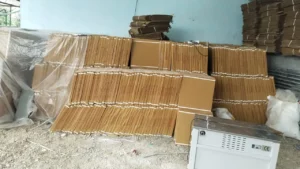How to Determine the Quality of Kota Stone: A Comprehensive Guide
Kota stone, with its remarkable durability, aesthetic appeal, and versatility, has long been a preferred choice for flooring in homes, offices, and public spaces. However, the quality of Kota stone can vary significantly, and it’s essential to be able to distinguish between the best and lesser-quality options. In this comprehensive guide, we will delve into the various factors that determine the quality of Kota stone and provide you with the knowledge you need to make an informed decision for your flooring needs.
How can you tell the quality of kota stone?
1. Color Consistency: One of the key indicators of Kota stone quality is color consistency. High-quality Kota stone tends to have uniform coloration throughout the surface. While variations in color are natural due to the stone’s origin, too much disparity in color might suggest a lower quality stone. It’s important to note that Kota Blue and Kota Brown have their own distinctive hues, but even within those ranges, consistency matters.
2. Texture and Finish: Inspect the texture and finish of the Kota stone. A premium quality stone will have a fine, smooth texture that is pleasant to the touch. It should not feel excessively rough or uneven. The stone should also have a well-polished finish that enhances its visual appeal. A lackluster finish or visible imperfections might be indicative of lower quality.
3. Thickness and Uniformity: A good quality Kota stone should have consistent thickness across its surface. Irregular thickness can result in an uneven installation, making it harder to achieve a seamless look. Measure the thickness at different points to ensure uniformity.
4. Absorption Rate: Kota stone’s porosity can impact its durability and longevity. A simple water absorption test can help determine the stone’s quality. Place a few drops of water on the surface and observe how quickly it is absorbed. A slower absorption rate indicates a denser, better-quality stone that will be less prone to water damage and staining.
5. Strength and Hardness: Kota stone is known for its strength and hardness, which contribute to its durability. You can perform a scratch test using a steel nail or a coin to assess its hardness. A high-quality stone should not scratch easily, and the surface should remain intact.
6. Resistance to Wear and Tear: Kota stone’s ability to withstand foot traffic and wear is crucial. High-quality Kota stone is less likely to show signs of abrasion and erosion even in high-traffic areas. Look for stones with a track record of maintaining their appearance under regular usage.
7. Flaws and Blemishes: Thoroughly inspect the Kota stone for any visible flaws, cracks, or blemishes. These imperfections can compromise both the aesthetics and structural integrity of the stone. A higher quality stone will have minimal to no visible defects.
8. Source and Supplier Reputation: Selecting a reputable supplier or manufacturer plays a significant role in ensuring the quality of Kota stone. Established suppliers with a history of delivering genuine and high-quality products are more likely to provide you with stones that meet the desired standards.
9. Certification and Testing: Some Kota stones might come with certification or testing reports that provide information about their quality, characteristics, and performance. If available, these documents can provide additional assurance of the stone’s quality.
Conclusion: Choosing the best quality Kota stone for your flooring project requires a keen eye and a basic understanding of the factors that contribute to its overall worth. By considering color consistency, texture, thickness, absorption rate, strength, wear resistance, and more, you can make an informed decision that aligns with your aesthetic preferences and practical needs. Remember to rely on reputable suppliers and manufacturers to ensure you’re investing in a premium Kota stone that will grace your space with both beauty and durability.

